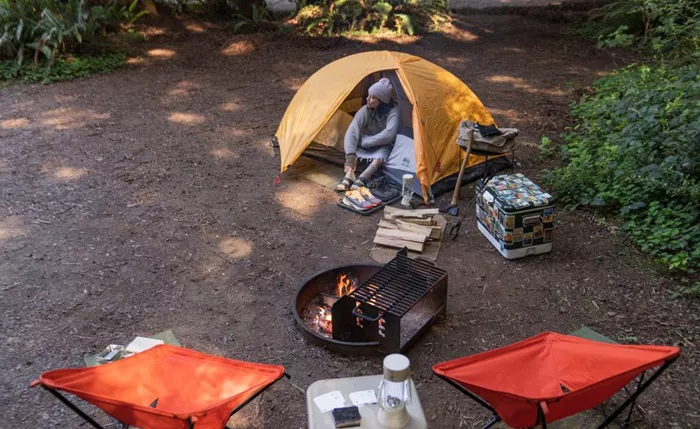Camping is a beloved outdoor activity for many people. It offers a chance to connect with nature, unwind, and create lasting memories. However, safety is a crucial aspect of camping that cannot be overlooked. In this article, we will explore various factors that influence camping safety and provide tips to ensure a safe camping experience.
Understanding Camping Risks
While camping is generally safe, certain risks exist. These risks can be categorized into environmental, wildlife, and personal safety.
Environmental Risks
Weather Conditions: Weather can change rapidly in nature. Rain, snow, and high winds can create dangerous conditions. Always check the weather forecast before your trip and be prepared for changes.
Natural Hazards: Many campsites are near bodies of water, cliffs, or dense forests. Hazards like flash floods, falling rocks, or slippery surfaces can pose risks. Stay aware of your surroundings and avoid risky areas.
Wildlife Risks
Wild Animal Encounters: Encounters with wildlife, such as bears or snakes, can be dangerous. Learn about the wildlife in your camping area and understand how to avoid interactions.
Insects: Mosquitoes and ticks can transmit diseases. Use insect repellent and wear long sleeves to minimize bites.
Personal Safety Risks
Injuries: Falls, cuts, and sprains can happen while hiking or setting up camp. Wear appropriate footwear and take your time when navigating rough terrain.
Illness: Contaminated water or improper food handling can lead to illness. Always purify water from natural sources and cook food thoroughly.
Preparing for a Safe Camping Trip
Preparation is key to ensuring safety while camping. Here are essential steps to take before your trip.
Research Your Campsite
Choose a Safe Location: Look for well-established campsites that are known for their safety and amenities. Avoid remote areas unless you are experienced in wilderness camping.
Check Local Regulations: Understand the rules and regulations of the campsite. This includes fire regulations, wildlife precautions, and campfire guidelines.
Pack the Right Gear
Emergency Kit: Always carry a first aid kit that includes bandages, antiseptic wipes, and necessary medications. Also, include a whistle, flashlight, and a multi-tool.
Appropriate Clothing: Dress in layers to adapt to changing weather conditions. Waterproof gear, warm clothing, and sturdy footwear are essential.
Camping Equipment: Ensure your tent, sleeping bag, and cooking gear are in good condition. Familiarize yourself with how to set up your equipment before the trip.
Plan Your Itinerary
Leave a Trip Plan: Inform a friend or family member about your camping plans. Share your itinerary, including your expected return date. This way, someone will know to look for you if you don’t return.
Know Your Route: Use maps or GPS devices to navigate your route. Familiarize yourself with the area and any potential hazards.
Safety Practices While Camping
Once you’re at the campsite, implement safety practices to enhance your protection.
Setting Up Camp
Choose a Safe Spot: Select a flat area away from hazards such as dead trees, unstable ground, or flooding zones. Ensure your tent is secure and properly anchored.
Create a Safe Campfire: If you plan to have a campfire, set it up in a designated area. Keep it small and manageable, and never leave it unattended. Extinguish it completely before sleeping or leaving the site.
Staying Aware of Wildlife
Food Storage: Store food in bear-proof containers or hung high in trees to avoid attracting wildlife. Keep all food and trash secured to prevent animal encounters.
Making Noise: When hiking, make noise to alert wildlife of your presence. This can help avoid surprising animals.
Navigating the Outdoors
Stick to Trails: Always hike on established trails to reduce the risk of getting lost or injured. Off-trail hiking can lead to dangerous situations.
Use a Buddy System: Camp and hike with at least one other person. In case of an emergency, having someone with you can be crucial.
Understanding Emergency Situations
Despite your best efforts, emergencies can happen. Knowing how to respond can save lives.
Recognizing Emergencies
Medical Emergencies: Be alert for signs of illness or injury in yourself and others. Know how to treat common injuries, such as cuts, sprains, or allergic reactions.
Wildlife Encounters: If you encounter wildlife, stay calm. Back away slowly, and do not run. Know how to respond to specific animals, like bears or moose.
Responding to Emergencies
First Aid: Familiarize yourself with basic first aid techniques. If someone is injured, assess the situation and provide care as needed.
Contacting Help: If you need to call for help, ensure you have a means of communication. Cell service may be limited in remote areas, so consider carrying a satellite phone or personal locator beacon (PLB).
Post-Camping Safety
After your camping trip, it’s important to reflect on your experience.
Leaving No Trace
Clean Up Your Campsite: Leave your campsite as you found it. Pack out all trash and leftover food to protect wildlife and the environment.
Evaluate Your Gear: Check your equipment for damage or wear. Repair or replace any items as needed before your next trip.
Reflecting on the Experience
Discuss Safety: Talk with your camping companions about what went well and what could be improved regarding safety. Learning from each experience is crucial.
Plan Future Trips: Use your experiences to plan future camping trips. Consider new locations or different types of camping to expand your skills and comfort levels.
Conclusion
Camping can be a safe and enjoyable experience when proper precautions are taken. Understanding potential risks, preparing adequately, and practicing safety measures can help ensure a fun adventure. Whether you’re a beginner or a seasoned camper, prioritizing safety allows you to focus on what truly matters—enjoying nature and making memories. So pack your gear, plan your trip, and embrace the great outdoors with confidence!
Related topics:
- The Best Rain Shelter for Camping
- Top 5 Sleeping Mattresses for Camping
- Best Packing List for Camping

